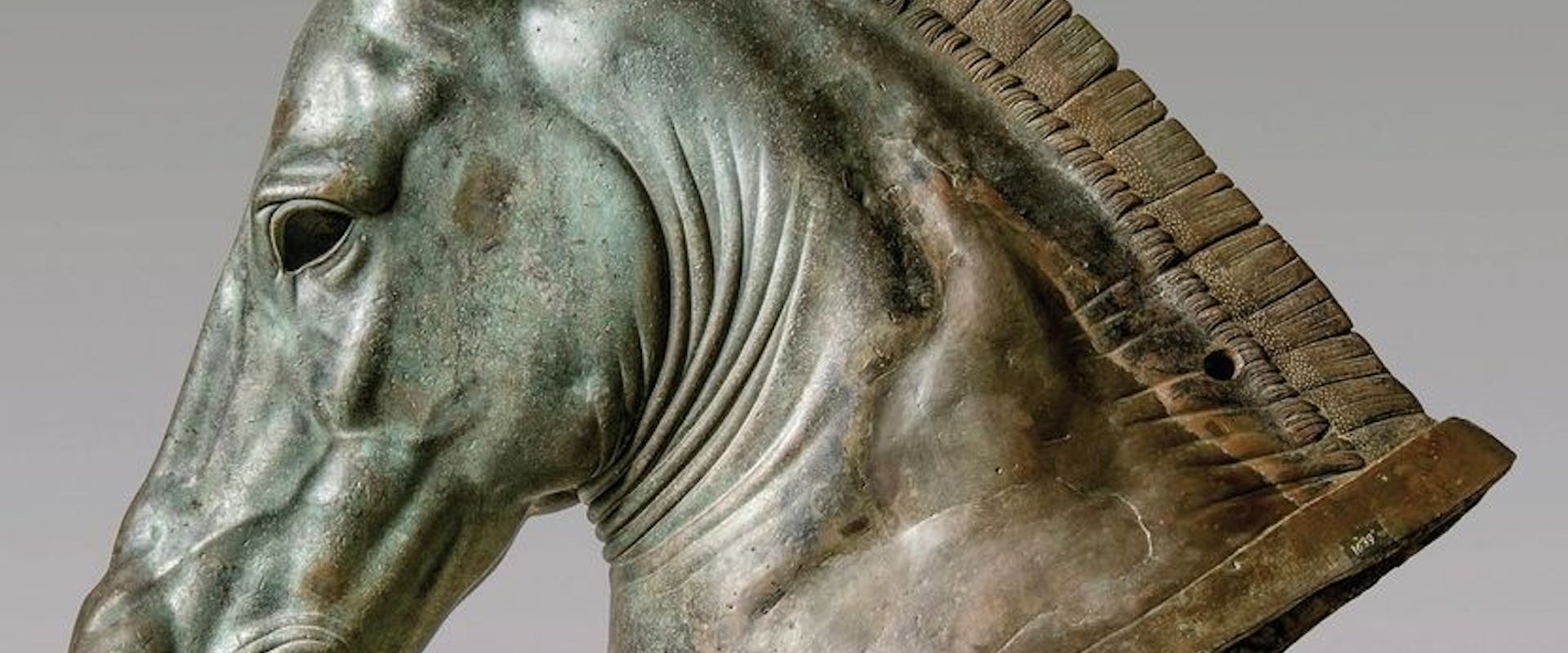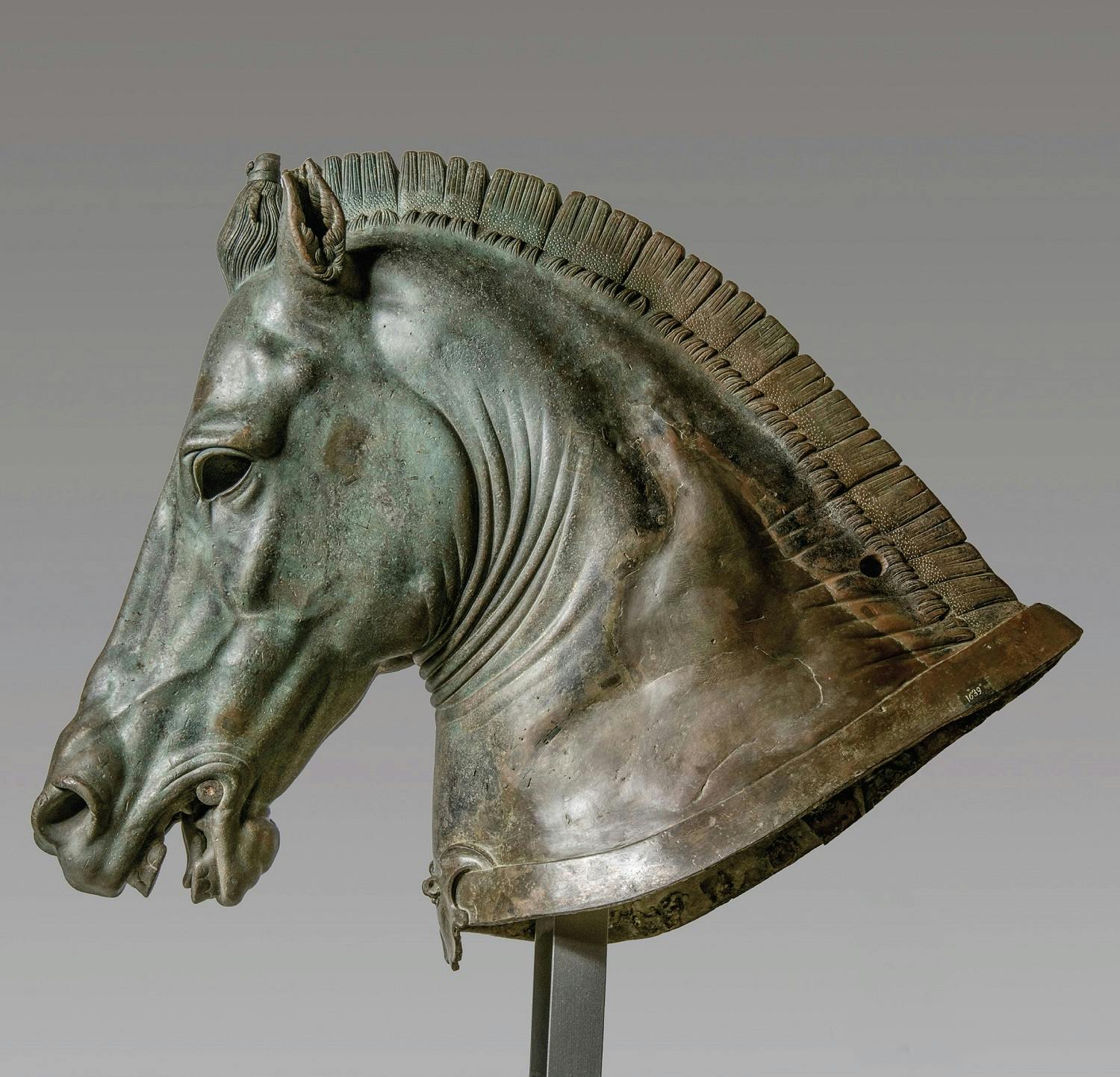Riding through the time. The Art of horse riding. From Antiquity to the Middle Ages
The Limonaia in Boboli Garden will be hosting an exhibition on the Age-Old Bond between men and horses
The horse was one of the last beasts to be tamed by man.
It was only in the latter part of the fourth millennium BC, somewhere on the central Asian tundra, that the horse ceased to a mere prey and its fate began to interweave ever more closely with that of man.
Curated by Lorenza Camin and Fabrizio Paolucci and hosted in the 18th century Limonaia in the Boboli Garden in Florence from 26 June to 14 October, the exhibition sets out to explore this age-old bond through a selection of items, often overlooked in exhibitions to the benefit of more eye-catching works, illustrating the myriad facets of a relationship that impacted every aspect of daily life.
"The place where the taming of the horse first occurred and was further developed is still one of the most hotly debated issues in scholarly literature today. But it would seem illogical to imagine that the horse began its age-old history of coexistence with man anywhere other than in eastern European and the Eurasian tundra", Camin and Paolucci write in the catalogue published by Sillabe.
Tools required to master the beast (bits, snaffle bits, spurs, stirrups and so forth) are showcased alongside works of art selected to illustrate, as directly and as realistically as possible, the leading role played by the horse in the ancient world. The circa 100 items on display, from dozens of Italian and foreign museums, cover a period of over 2,000 years stretching from the Early Iron Age to the later Middle Ages.
The numerous items on public display for the very first time include the Populonia Gig. This extremely rare example of an Etruscan carriage, discovered in the so-called "Fossa della Biga" (or "Two-Horse Chariot Ditch") in the mid-20th century, has been reassembled following recent restoration commisssioned expressly for this exhibition. The gig, in wood, iron and bronze and dateable to the early 5th century BC, was a slow vehicle used to carry personalities of rank and for wedding processions and funeral corteges.
Of unique interest are also two horse skulls unearthed during excavations in the western necropolis of Himera, and now in the Museo Pirro Marconi in the Parco Archeologico di Himera. The Syracusans crushed the Carthaginians in a bloody battle near Himera in 480 BC, in the course of which hundreds of soldiers and horsemen were slain. Mass graves for the bodies of the fallen were discovered close to the battlefield alongside graves for horses. The skulls on display here still have their bronze ring bits of a kind found primarily in the Iberian peninsula, which would seem to bear out Herodotus' contention (VII, 165) that the Carthaginian army included Hispanic mercenaries in its ranks. This was a fairly unique find because horse burials were uncommon in 5th century Greece and Magna Graecia, but the victory was clearly considered such a magnificent feat that the soldiers and their mounts were afforded special recognition.
The relationship between man and horse is perfectly encapsulated in the Attic red-figure kylix depicting Athena and the Trojan Horse now in the Museo Archeologico Nazionale di Firenze. The inner bowl of the cup, painted by the Sabouroff Painter who worked from 470–460 to 440–430 BC, shows the goddess Athena enthroned, stroking a horse of epic proportions who sports the tainiai niketeriai or red woollen bands signifying victory. Most scholars agree that this must therefore be a depiction of Athena with the Trojan Horse, a symbol of the strategem devised by the goddess herself which gave the Achaian (Greek) side victory in the war.
This and many other exhibits recount and illustrate the most diverse aspects of the relationship between man and the horse. From daily life (conjured up in the exhibition by an extremely rare wooden yoke from the Pisa shipwrecks) and children's games to war and religious ritual, horses were always a constant presence by man's side. The last beast to be tamed, the horse proved capable of carving out a major role for itself in the art, society and literature of the ancient world thanks to its innate beauty and nobility, which inevitably ended up reflecting also on its rider.
As Eike Schmidt, Director of the Gallerie degli Uffizi, so effectively puts it: "The whole concept of this exhibition appears to be encapsulated in one of the exhibits on display, a splendid pair of 4th century BC bronze and ivory chanfrons designed to protect the horse's forehead, nose and muzzle: the silhouette of the metal sheeting, shaped and embossed follows the outline of the horse's elongated anatomy, but on the inside, far from displaying the anatomy of a horse, it depicts the features of a human face sporting a helmet on its head. The horse and its rider become a single, fused being. From the Old Stone Age to the end of the 16th century, the exhibition explores this relationship which has marked the history of mankind from the outset and which is still so surprisingly relevant to our own time".
"Riding Through Time", a multivision product devised and directed by Gianmarco D'Agostino, completes the exhibition with some 300 square metres of screenings. The visual correspondence between the exhibits on display and images from life paired with an immersive soundtrack will unquestionably enrich the visitor's exploration of the friendship between man and horse down the centuries.
The exhibition catalogue is published by Sillabe.
Traditional Horse Parade through the Boboli Gardens
October 7, 2018
Special Events

